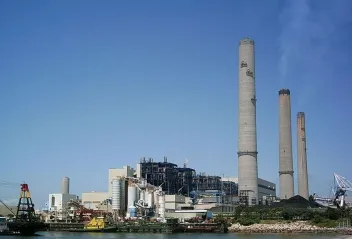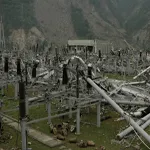Technology
9 in 10 Hong Kongers willing to pay higher tariff to support renewables development
9 in 10 Hong Kongers willing to pay higher tariff to support renewables development
Over half of this population would shell out for a 5% bill hike.
Myanmar's hydropower investors urged to zero in on sustainability
Industry leader Aung Zaw Naing calls for better sharing of information among hydropower professionals.
Crossing installs tracking system for Taiwanese solar firm
Crossing Automation has completed installation of a material tracking system for a Taiwanese solar cell manufacturer. It consists of its Auto ID and automated tracking system software, Smart Storage asset tracking and Smart Storage racks. As part of the project, Crossing developed customized ATS software for solar cell carriers throughout the fab, carrier racks were incorporated with additional sensors to ensure proper placement on the rack, and the solar rack design and the layout itself was developed with input from the customer.
Rental rates and booming power plants
National Hydroelectric Power Corp., India's largest hydropower generator, will proceed with a planned share sale after state-run Rural Electrification Corp.'s IPO drew bids for more stock than on offer.
Korea's Jeolla region emerging as the Mecca of Photovoltaic industry
Photovoltaic businesses are hogging the spotlight thanks to skyrocketing international oil prices, and Korea's Jeolla region is emerging as the Mecca of domestic solar industry. As oil prices continue to snowball, the world has been continuously bombarded by a countless amount of ideas relying on oil, coal and natural gases to be the solution to all our oil related dilemmas. Solutions that the global economy seems to be focusing on mostly comprise of the reliance on unsustainable fossil fuels that threaten our future with possible global climate change, toxic pollution and inevitable social unrest due to diminishing fuel supplies. That's where infinite and inexhaustible solar energy comes in.
T&D Infrastructure and Workforce Challenges Call For Integrated Asset and Workforce Management
Two T&D challenges have arisen from the rapid expansion of Asia's power industry: (1) a diverse asset infrastructure, and (2) a young workforce, challenged to match specific expertise to specific work requirements. How should utility companies respond? The solution has two components:
Invensys Process Systems to provide an InFusion Enterprise Control System to LDPE plant in Thailand
Invensys Process Systems has been awarded a multi-million dollar contract by Simon Carves Limited to provide an InFusion Enterprise Control System through an engineering, procurement and construction (EPC) contract for PTT Polyethylene Company Limited (PTT PE). Invensys will provide a complete enterprise control solution for the grass-roots, 300,000 t/y LDPE plant that will be built at the Padaeng industrial estate in Thailand.
Restoring power to earthquake hit China
Immediately after the devastating earthquake struck China on May 12, the country's State Electricity Regulatory Commission (SERC) activated their highest emergency response systems to respond to the disaster. SERC assured everyone affected that they, and many other Chinese relief agencies, would employ maximum efforts to restore power disrupted by the 7.8 magnitude earthquake that hit China's Sichuan Province. The earthquake severely damaged power facilities in Sichuan, Gansu and Shaanxi Provinces. SERC reported that the massive earthquake, whose epicentre was in Wenchuan County, about 100km from the provincial capital Chengdu, disrupted electricity supply in China's central and north-western regions. They said that it was too soon to gauge how seriously the grid has been damaged, but the fact that SERC President Wang Xudong activated a Class One emergency response, the highest of five levels, signified the gravity of the situation. In order to secure power supply, SERC also ordered hydropower plants to monitor dams in quake-hit areas and keep close touch with local governments and flood-control command agencies. Officials at China Huadian Corporation, a centrally-administered power generator, said it had lost contact with its enterprise in the epicentre, although operations in other quake-ravaged regions had resumed shortly after the disaster. Another of the region's major power generators, China Guodian Corporation, reported only temporary interruptions in operations in Sichuan and that a small number of workers injured by stones rolling from a construction site in Daganshan were hospitalized. The company said its hydropower plants in Gongzui and Nanyahe River Valley in Sichuan were operating normally despite strong tremors on the Monday afternoon after the quake. The State Grid Corporation of China, the country's largest power transmission company serving more than 1 billion people across almost 88 percent of China, reported that the quake had cut the electrical load in Sichuan by 4 million kilowatts, paralyzing one 500-kv power station and five 220-kv power stations. State Grid also said that power plants in western Sichuan including Jiangyou, Jintang, Baozhusi, Maoxian and Dazhou Dongyuan were cut off from the grid. In Shaanxi Province, the electrical load shrank by 1.5 million kilowatts immediately after the quake with two transformer sub-stations and three power generators malfunctioning or non-operational they said. But the trunk power grid was operating smoothly, and the situation had improved overnight, with the lost electrical load recovering, State Grid reported. To determine the damage to power facilities, a number of emergency response teams from State Grid made their way on foot to the worst-hit regions of Aba in Sichuan and Longan in Gansu, which had been cut off from telecommunications and transportation networks. The State Grid classified railways, telecommunications and hospitals as "crucial users" whose power supply must be secured along with that for residential use to facilities relief work and ease the suffering of the victims.
The solar shade revolution
The destiny of China's power sector is looking brighter than ever thanks to a recent surge in popularity of renewable energy sources, in particular solar power. It seems the time has come for China's 1.3 billion people to slide on a pair of sunglasses as China prepares itself for a solar revolution. In China's never-ending pursuit for renewables, the National Development and Reform Commission (NDRC) is setting bold targets for renewables to make-up as much as 10% and 15% of China's power sector by 2010 and 2020. China, which is ranked as one of the biggest solar power users in the world, debuted its biggest solar PV station (1.046MW capacity) in 2007 on Shanghai's Chongming Island. China's newest development is a 10MW solar PV station scheduled to begin operations in 2009. The NDRC is also planning to build a 50MW building-integrated PV system and a 20MW large-scale PV power station for a 2010 start. In 2020, China will install a 1GW BIPV and 200MW large-scale PV station. China's exciting new solar developments should bring it up to speed with the rest of the world, just in time for solar to become competitive on a global scale in 2015. The destiny of China's solar power movement however depends on the continued support of the government. "The installed capacity of solar power would grow by at least 25 per cent each year in the next three to five years as a result of government support and the nation's growing awareness," said Carrie Liu from JP Morgan. In terms of solar wafer and module production, the world is poising itself for a Chinese domination thanks to China's low labour and electricity costs. Module production is one aspect in which China is leading the way, with LDK planning to have a 15,000 tonne polysilicon capacity by 2009. Three major PV cell/module companies in China, CEEG, Yingli Green Energy and Suntech, recently announced a 1.5MKW capacity expansion. The scale of China's wafer, cell and module capabilities is clearly China's best weapon in its pursuit to stay one step ahead of the competition in Asia's solar power industry.






 Advertise
Advertise















Commentary
How pump retrofits boost profitability and efficiency in ageing power plants